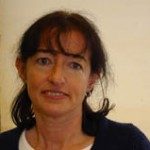Link to Pubmed [PMID] – 1551400
Eur. J. Immunol. 1992 Apr;22(4):1001-6
The expression of an X-linked defect in the CBA/N strain of mice has been found to result in a number of immune abnormalities. These include low responsiveness to antigens and a greatly reduced ability to respond to many of the common B cell mitogens. An in vitro manifestation of this condition is the virtual inability of CBA/N B cells to form colonies in lipopolysaccharide (LPS)-containing semisolid agar cultures. In this report we show evidence that the colony-forming ability of CBA/N spleen cells can be effectively restored by the bone marrow stromal-derived cell line S17. Spleen cells from 4-5-week-old homozygous CBA/N female mice were grown in double-layer agar cultures containing S17 feeder layers. Control cultures contained the fibroblast-like cell line 95.17 or were treated with medium alone. It was found that at an input cell concentration of 10(4) cells per plate, CBA/N colony formation was increased from a frequency of approximately 1 in 5,000 to 1 in 50 total splenic cells. Studies with purified surface immunoglobulin-positive cells indicate the direct involvement of S17 in this process. The CBA/N colonies formed were dependent on the presence of a mitogen (LPS) and secreted detectable amounts of IgM. Major implications of these findings and the application of this assay system to study the CBA/N defect have been discussed.
